Josie Le Balch and Daniel Snukal of 3 on Fourth, Santa Monica chefs that both use Estancia grass-fed beef, invited local writers and chefs to Josie Restaurant to showcase Uruguay’s finest export. Not only did the event turn out to be a terrific learning opportunity, but it also featured some of the best food so far in 2008.
Before Estancia began their presentation, Le Balch and Snukal each circulated small bites. The beef was noticeably leaner, but far from dry.
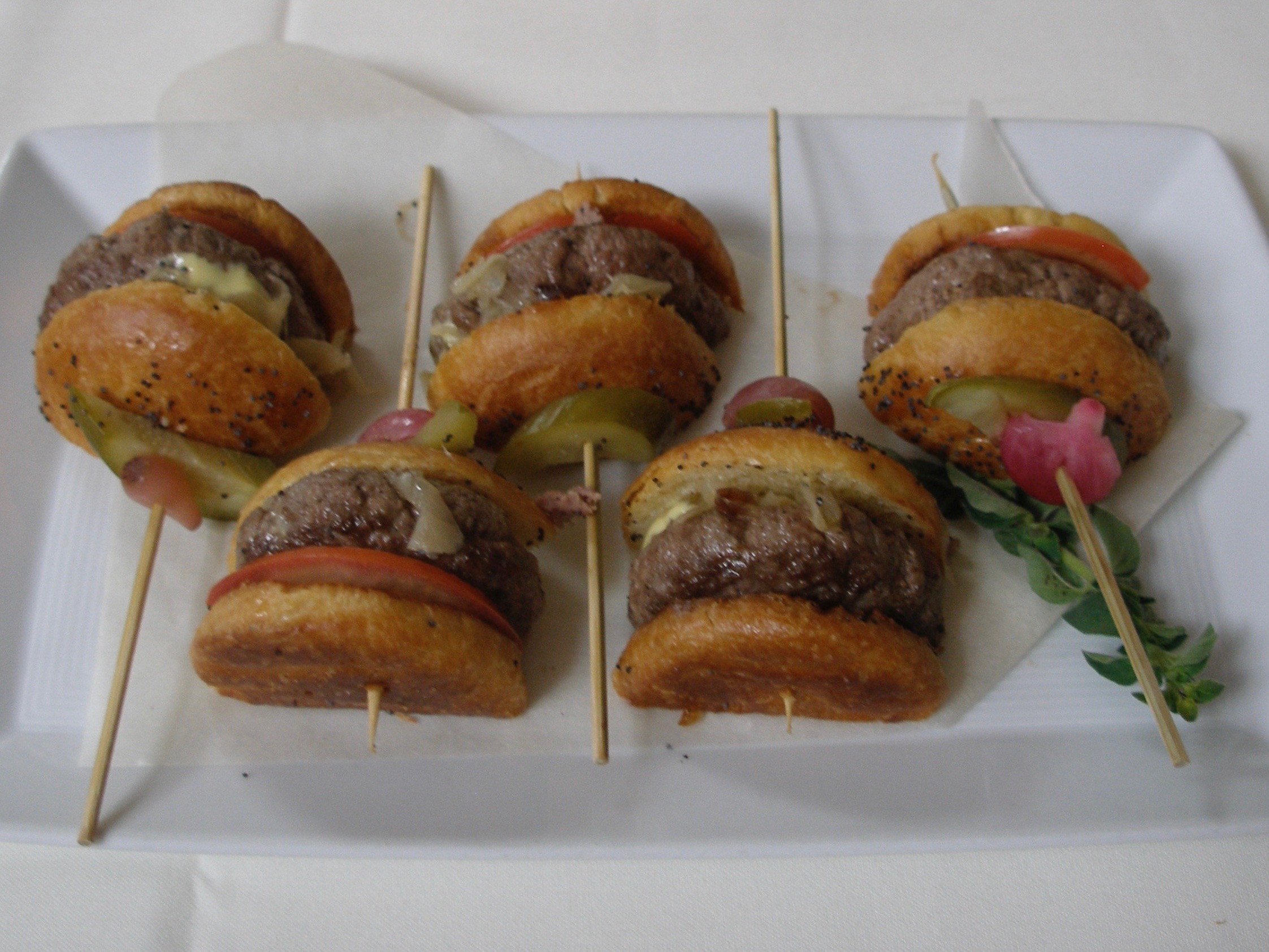
They skewered Mini Burgers with mayo-brushed sesame seed buns, caramelized onions, tomato slices, crunchy pickles, and tiny pickled onions.
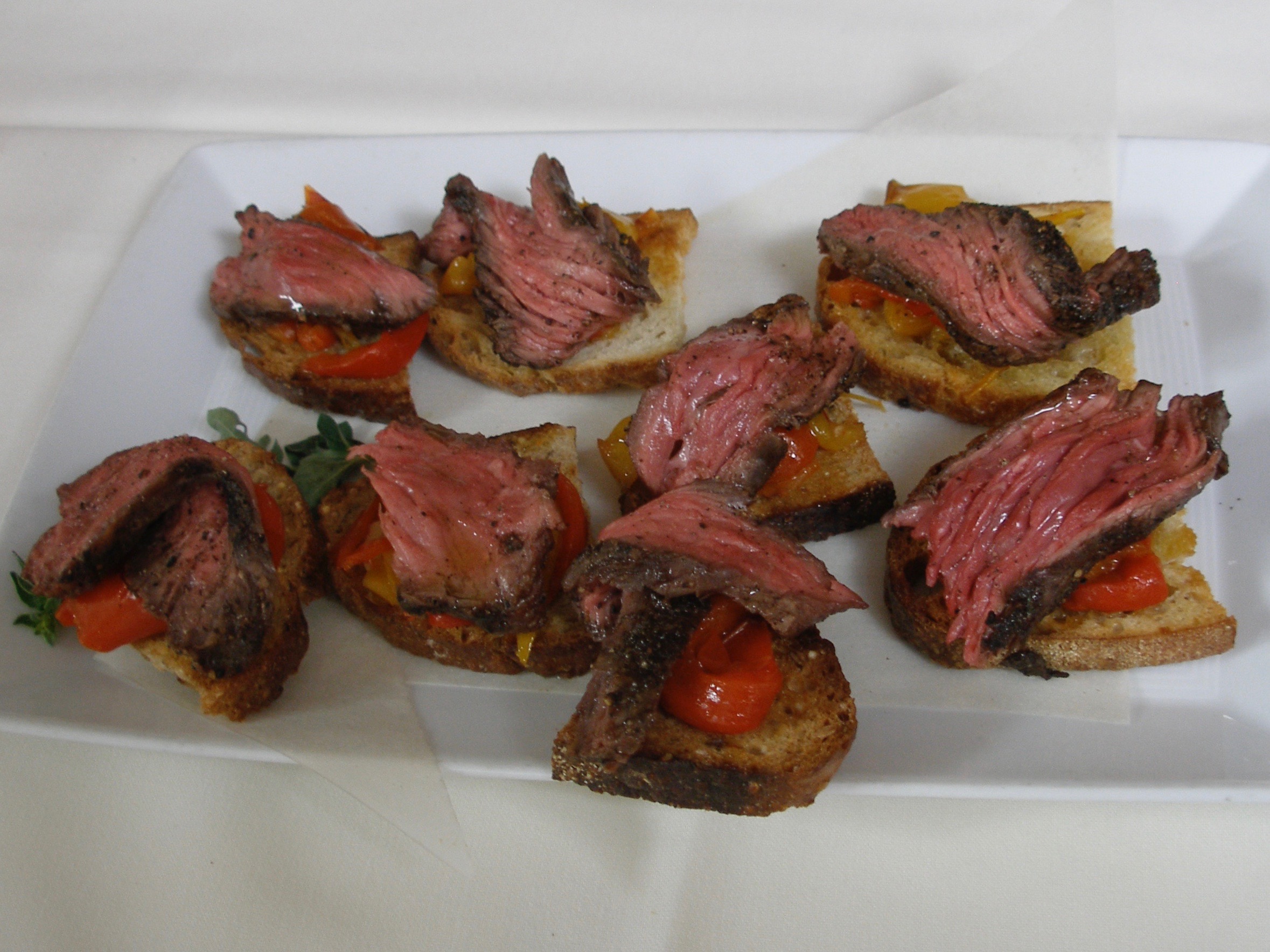
Each crostini featured a thin slice of seared flatiron steak, a cut of sweet roasted bell pepper and garlic.
The crostini were terrific in their simplicity. The texture of the beef was visibly different from corn fed beef, with thread-like musculature.
After over a half- hour of mingling, Estancia co-founder Bill Reed addressed the crowd. In 2006, he launched Estancia with Argentina native J.P. Thieriot, dedicating their San Francisco based company to grass fed beef. Reed grew up in Virginia, where his family has been farming cattle for two generations.
Estancia works with a co-op of 40 different Uruguayan ranchers who follow the company’s strict protocols, which includes no hormones or antibiotics. Hereford and Angus breed steers are fed an exclusive diet of live grass: white clover, rye and bear’s foot (which is like alfalfa), a combination that Reed says “puts protein on an animal that you can’t get from corn fed.”
Uruguay is one of the only places in the world where conditions are ideal for growing grass, thanks to year-round rainfall. Whereas USDA has grades of beef like Prime, Choice, etc., in Uruguay, they have a six-point scale. Estancia only imports beef graded 5 or 6, as judged by an independent auditor.
Estancia imports cuts like tenderloin, ribeye, strip loin, burgers and ground beef, plus unique cuts like flank, skirt, flat iron, top sirloin, tri-tip, rounds, knuckle and bavette (aka flap).
Reed vividly illustrated the differences between American and Uruguayan beef production, saying, “When you go down there, there are barns and a guy on a horse. That’s it. Here, you have grain elevators and machines.”
When comparing the flavor between grass fed and corn fed beef, Reed said, “The flavor is stronger than corn fed beef, like the difference between chicken and duck. You taste more beef flavor than butteriness, more texture.” Grass fed is also healthier, stemming from a type of fat rich in Omega 3/Omega 6 ratios, and 50% less fat and cholesterol.
Gabe Turner, who works for Estancia, addressed a concern about the carbon footprint generated by importing beef from Uruguay. He said, “”We must look at the bigger picture: producing petroleum-intensive corn fed beef in the Midwest and shipping it across the country could be just as – or even more – damaging to the environment than importing sustainable grass fed beef. Furthermore, Turner said that if California had year-round grasses, that’s what Estancia would be using. He made it clear, “We can’t produce something like this locally.”
A writer asked Reed about Brazilian beef. He said, “North of Uruguay, you get too many bugs, it’s too muggy, so they have Brahma, which are more durable, but don’t have [Hereford’s] tenderness or flavor.”
Daniel Snukal and Josie Le Balch addressed the crowd. Snukal said they went for “duality, with the straight flavor of the grill, and other dishes, to try to bring out some sweetness.” Le Balch “wanted people to try the beef as beef is.” She cooked with “out of the bag ribeye” and two differently-aged New York steaks. Turner added, “Traditional asados in Uruguay only add a little salt. The flavor of the meat speaks for itself.”
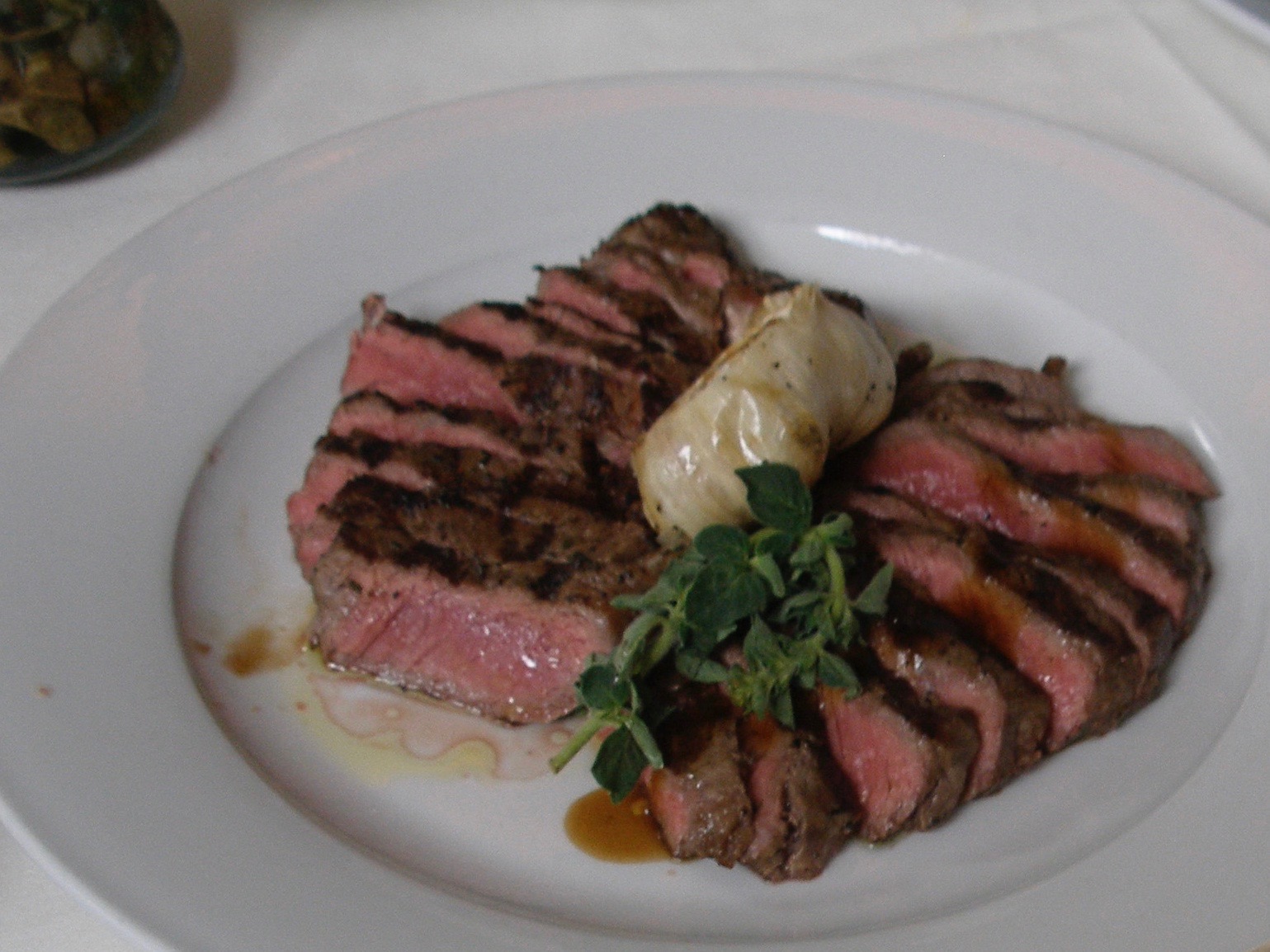
Grilled Rib Eye Steak was luscious, simply seared and plated with garlic bulbs.

Beef Tenderloin Carpaccio was blanketed with sweet California peach shavings, thin-shaved Parmigiano-Reggiano, micro greens and a judicious truffle vinaigrette sprinkling. Grilled and sliced New York Steak joined roasted garlic and a rosemary sprig.

Snukal was inspired to cook Korean BBQ Rib-Eye Steak based on visits to Koreatown, paired with grilled Portobello mushroom caps.
His marinade involved soy, garlic and peaches, for a little sweetness. The center of the table held copper pots of Red Wine Sauce and Peppercorn Sauce. Salsa Criolla Argentina was the South American equivalent to pico de gallo. The beef didn’t need any bolstering, but since I’m such a big fan of Chimichurri Sauce – basically finely chopped parsley and olive oil – I spooned some on the New York steak, to good effect.
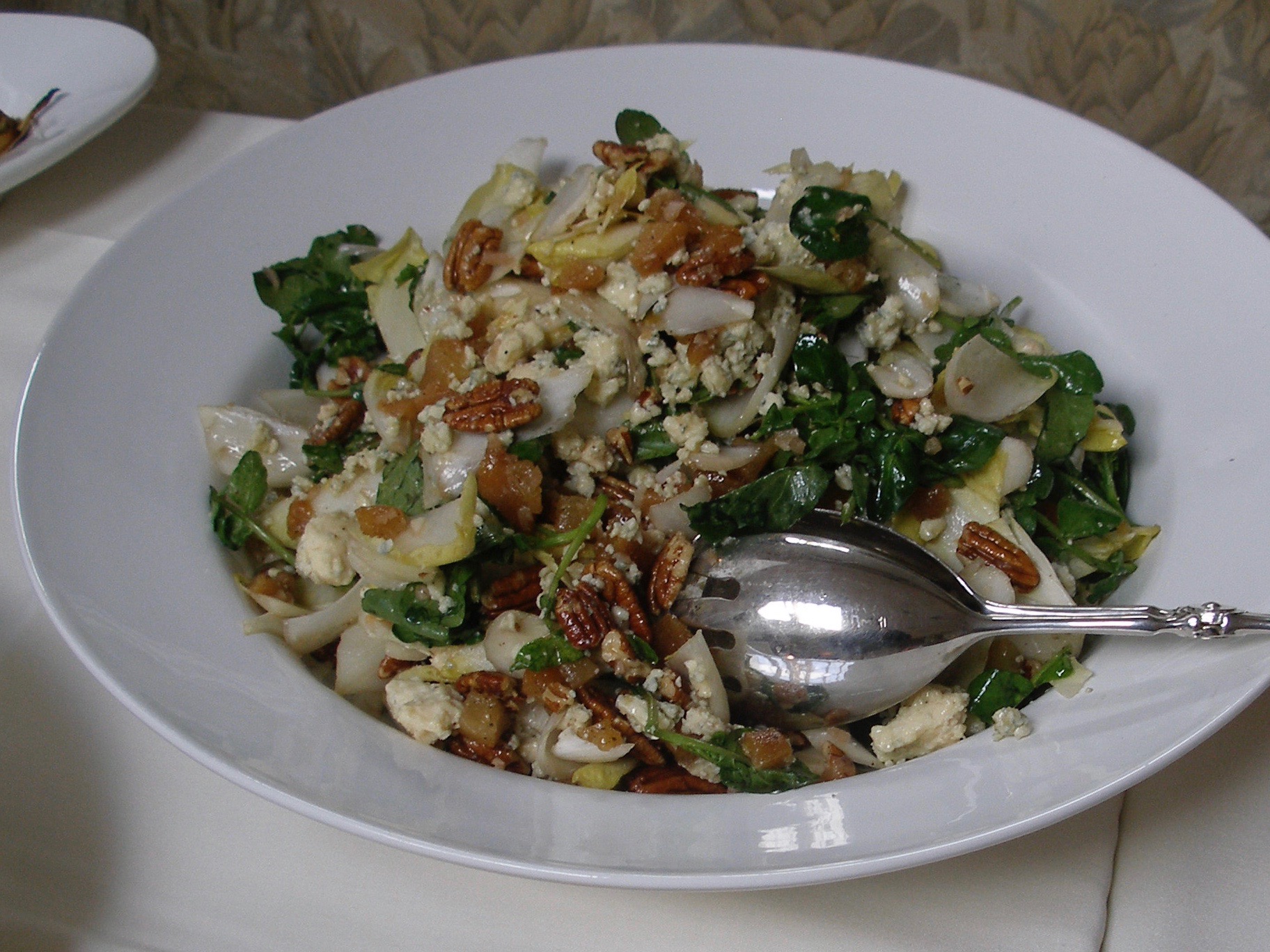
Accompanying plates of absolutely of-the-moment vegetables included snap-fresh Endive Salad tossed with roasted pear shavings, pecans and blue-veined crumbles of Stilton.

Simply prepared plates also starred Roasted Potatoes (white and purple), Baby Carrots (orange and yellow) and delicious caramelized Fennel bathed in olive oil.
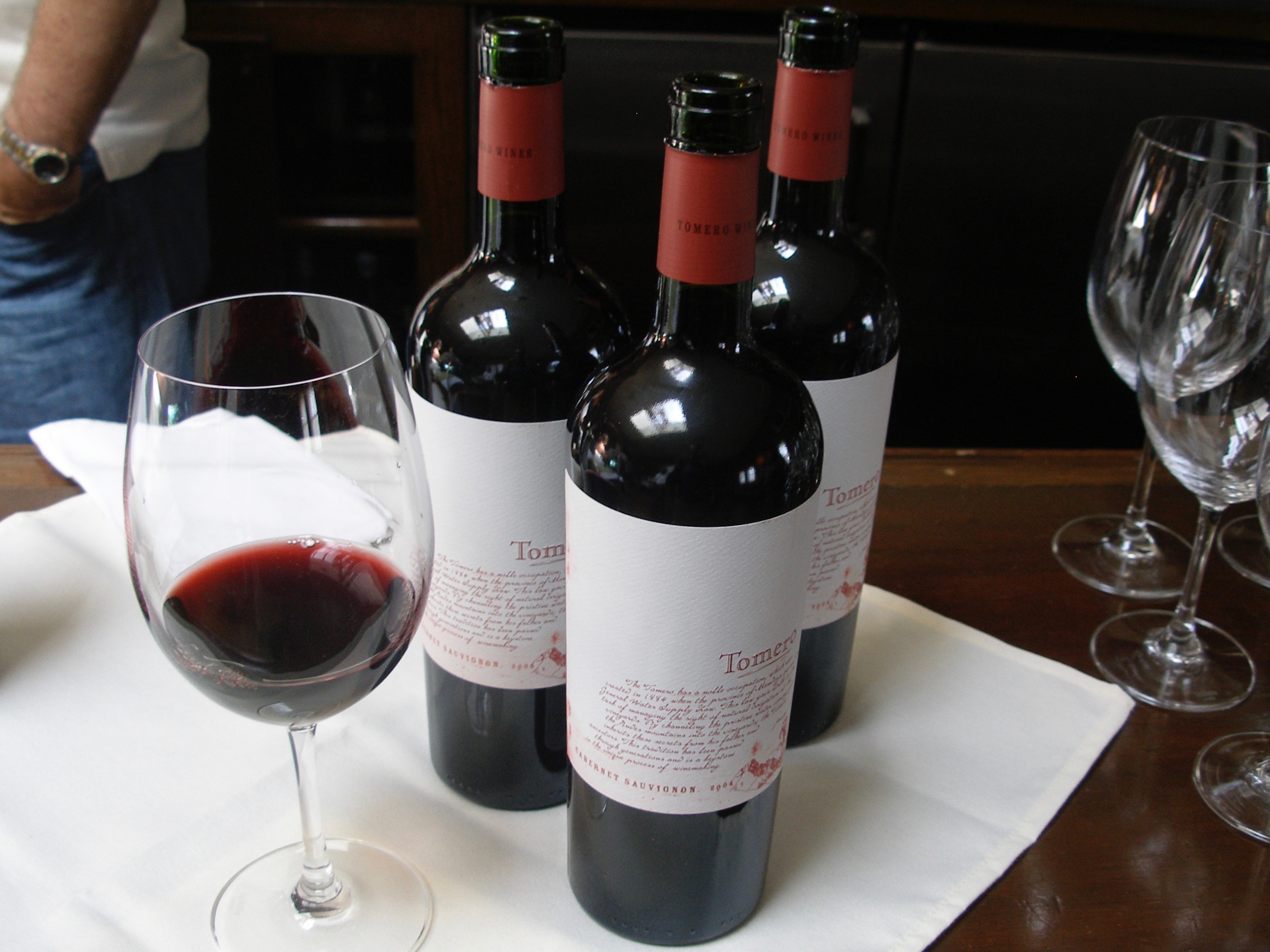
Tomero provided bottles of 2004 Cabernet Sauvignon, a full-bodied red.
Alberto Latalista is Reed’s friend who works for Argentinean wine producer Tomero in the U.S. Reed said that any red wine goes well with beef, but Malbec pairs particularly well with Estancia, since they’re both light.
Estancia has had over two years to fill San Francisco restaurants with their beef, gathering high-powered supporters like restaurateur Michael Mina. Now they’re expanding their presence in Southern California, with chefs like Govind Armstrong from Table 8, Jason Johnston and Jeremy Strubel from Dakota (present at today’s event), James Boyce from Studio in Laguna Beach, and Jason Tuley from Square One in Santa Barbara (present at today’s event). Based on my initial experience with Estancia beef, it’s easy to imagine a steady stream of new converts.

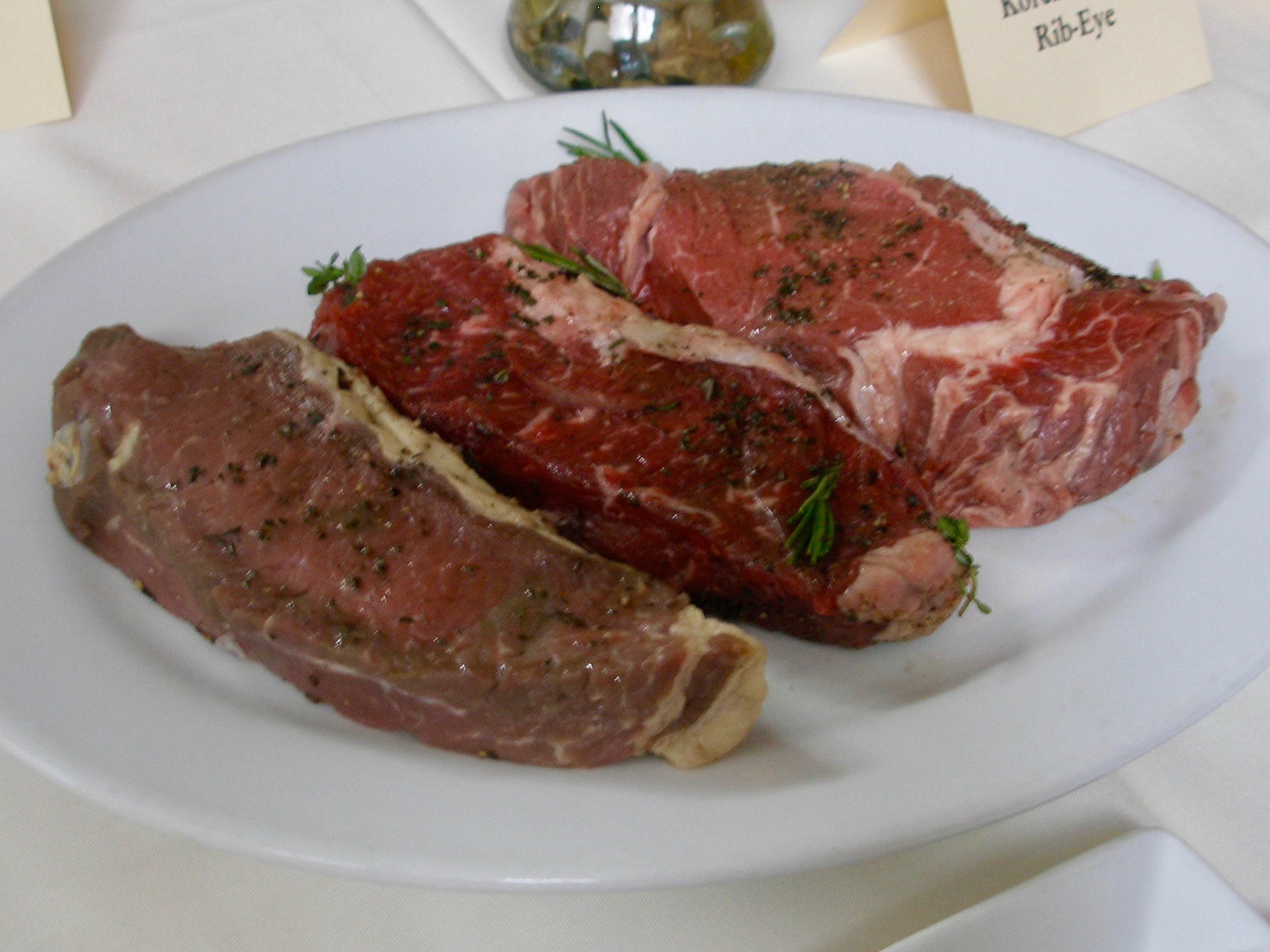

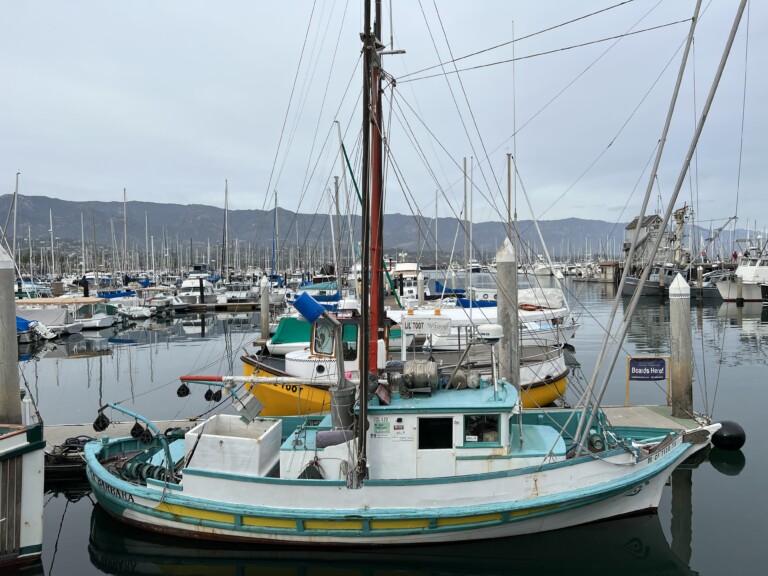





Leave a Comment